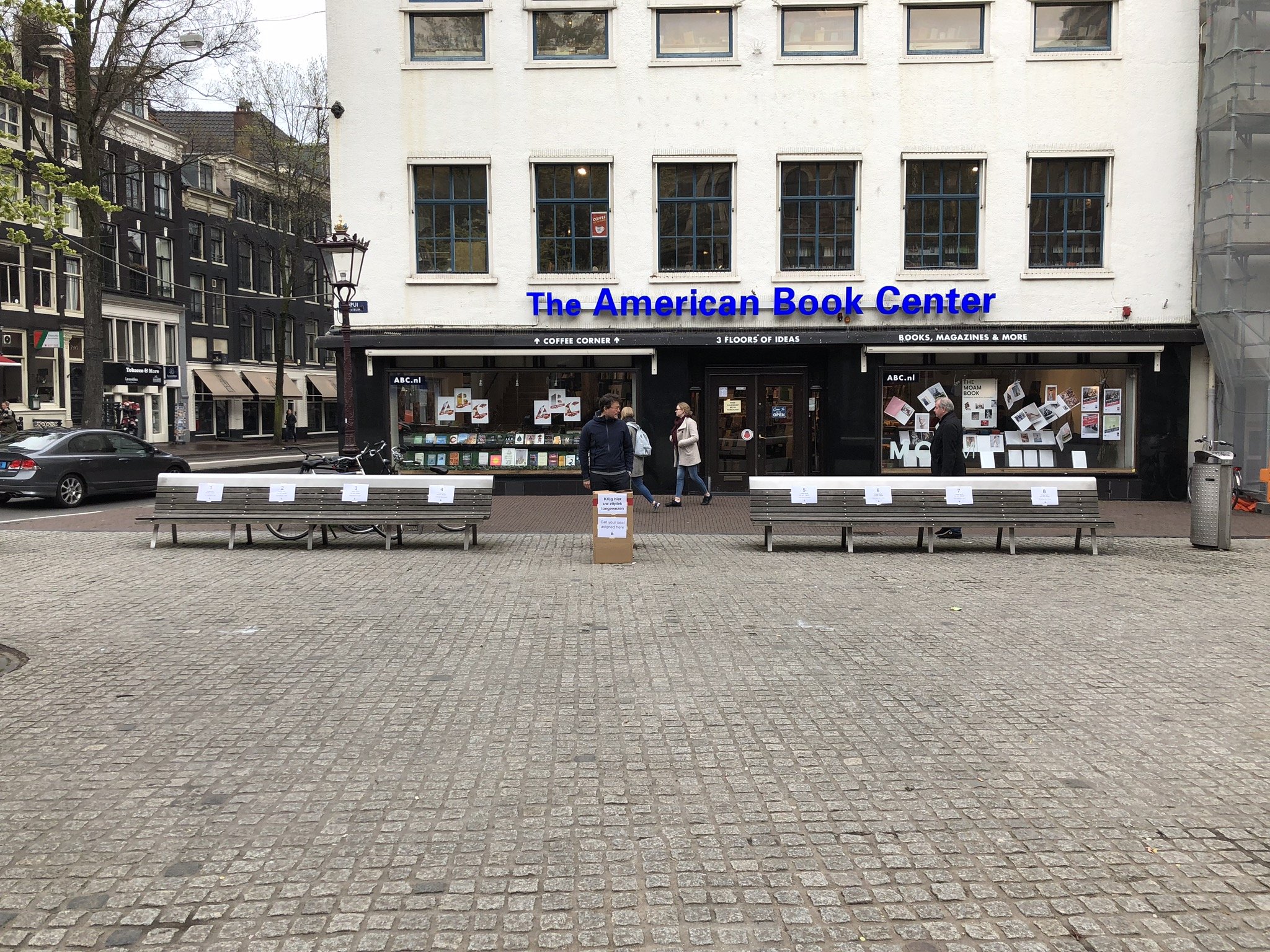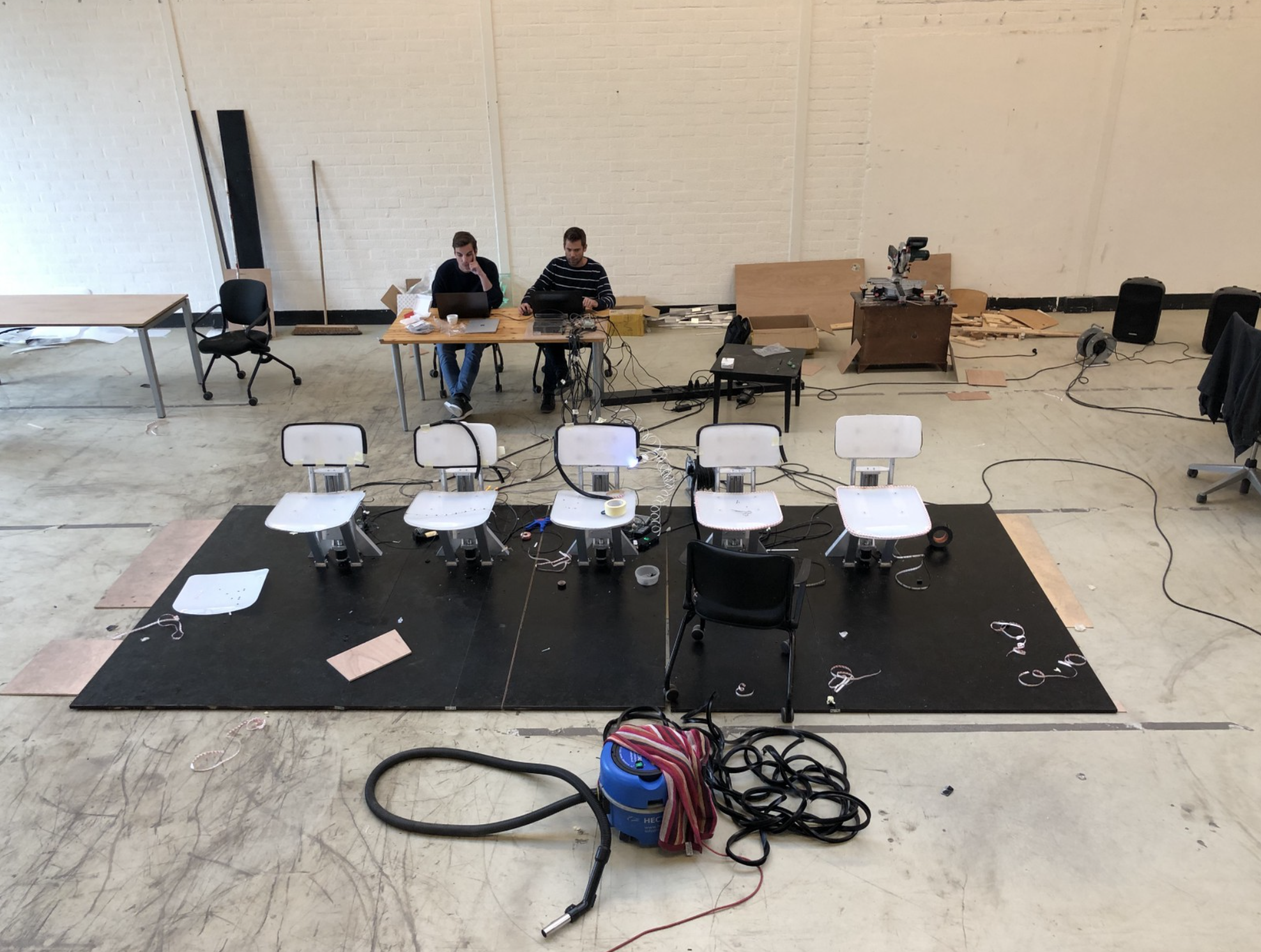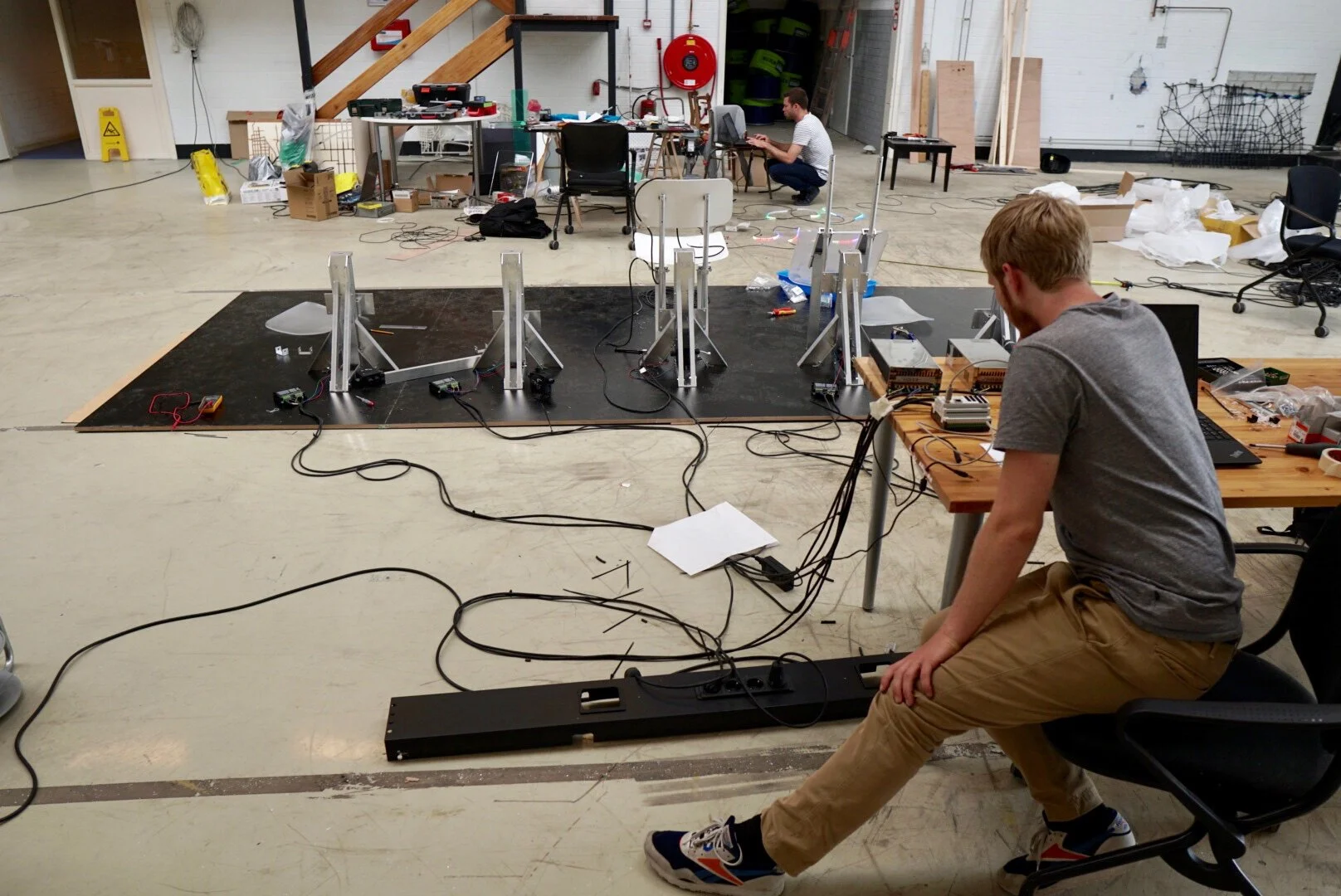How we designed the Chairwave
In public spaces, people don’t like to sit next to each other people if they don’t have to. At a train station or airport you’ll find people sitting as far away from each other, even though research shows that talking with strangers makes people (and you!) feel happier. So we made the Chairwave, an interactive row of chairs that only opens seats next to where people sit down.
In six months we went from a first sketch to a prototype. The big question was: Would people actually start talking to each other if they have to sit next to each other?
The concept
The idea for the chairwave started with a simple illustration with a woman on the right who is trying to open a chair, only to find the seat won’t open. If she wants to sit she can only sit next to one of the two people already sitting there. When she does so, the seat next to her will fold open, and so on. When the municipality of Amsterdam Metropolitan Area (AMA) wrote a request for ideas on how to make city squares more vibrant, we had the right match.
Requirements
We set up the requirements for the design together with AMA. Making public furniture means that people will touch it. That’s very cool, but means it has to be idiot proof. Amsterdam added that Chairwave also needed to make the place safer at night and it need to be a bezoekmotief (‘reason to visit’) for their city.
In short, the three main requirements were:
Idiot proofness
Safe at night
A ‘bezoekmotief’ (= reason to visit)
Research
Are people actually waiting for a bench that forces you to sit next to other people? To learn this, we did two different studies.
First, we observed for hours on a train station in The Netherlands how people sit. We wanted to know if people start interacting (which means: start talking or at least say hi) when they sit next to each other. We kept track of this data in a small diagram with time-codes when people sat down and if they said something to strangers. In all those hours, not a single person sat next to a stranger and no one said hi to another.
Our view during the test
The diagram of sitting behavior
Secondly, we wanted to know if people start interacting with each other when they have to sit to sit next to a stranger. So we numbered the seats on public benches in Amsterdam. People who wanted to sit down then got a seat assigned by Justus, who was standing in the middle of the benches. He only assigned seats next to where other people were sitting. Turns out, we got people who didn’t know each other talking to each other, some for over 15 minutes.
Justus assigning seats to people
Design
For the first concept sketch we made the chairs fold open like cinema chairs. But a rotary movement to open the chairs is not a very strong mechanism. We also wanted to make the way the seats open more poetic and have a friendly feeling, to make it more of a bezoekmotief. So we started brainstorming of all possible ways how we can we make seats magically appear next to other seats.
We finally opted for a linear sliding mechanism because it was more solid than a rotating mechanism and it gives the fold a more friendly (‘human’, even) feeling. It’s also a reference to the famous Zigzag chair by Rietveld. We worked day and night to make a cardboard model:
This principle was used to create a CAD model, with a wave going through a row of chairs.
Last requirement was that the chairs need to make a space feel more safe at night. We decided we needed lights in the chairs. The most iconic way to do this is to make the seats and backrest light up. After a lot of testing of different methods, we decided on using a light guide panel (led projected into the sides of the plexiglass). We engraved 10mm plexiglass with a special dot pattern that spreads the light from the sides evenly over the whole area of the plane. Then we heat-formed the plexiglass using an old oven and two old school chairs as a mold.
With a test model we checked all the dimensions and different techniques. The first chair was slowly coming together.
Construction
For construction we worked with our fixed team of contractors. This includes a light designer, a mechatronics engineer and a data engineer.
The chairs are controlled with a Controllino. A system of sensors detects when people are sitting down on a chair and a program written on the arduino platform determines which chairs need to be opened and closed at what time. The chairs are then moved to their calculated positions using stepper motors. Our program also broadcasts times of people sitting down on one of the chairs as events via a server program written in Python. This allows us to later analyze the event data and make modifications based on what we measure. Finally, we use the same interface to control our lighting programs, giving people visual feedback as they sit down on the chairs.
Live Testing
After weeks of cutting, soldering, wiring, assembling, bug fixing, the Chairwave was ready for public testing. An exciting and scary moment as you never know how people will use your product in real life. But the moment the Chairwave was installed people immediately looked curiously at the chairwave and started testing it. People were truly understanding the concept!
Future steps
The Chairwave is our first concept of what reimagined public furniture could look like. It is an answer to the question how we can get people off their phones and make them interact more. The result is a concept that makes seats available on demand. What if an airport or train station would only provide the seats necessary for that time on the day? How much extra space would we gain when the public space could be transformed to every moment of the day? After this first prototype of 5 chairs, we are working towards installing dozens of chairs at a public space to see if the chairs can get strangers to talk to each other on a larger scale.
Update: new design
The Chairwave design and mechanism was overhauled in 2023. Making it more durable and lasting. It has now been exhibited all over the world.











